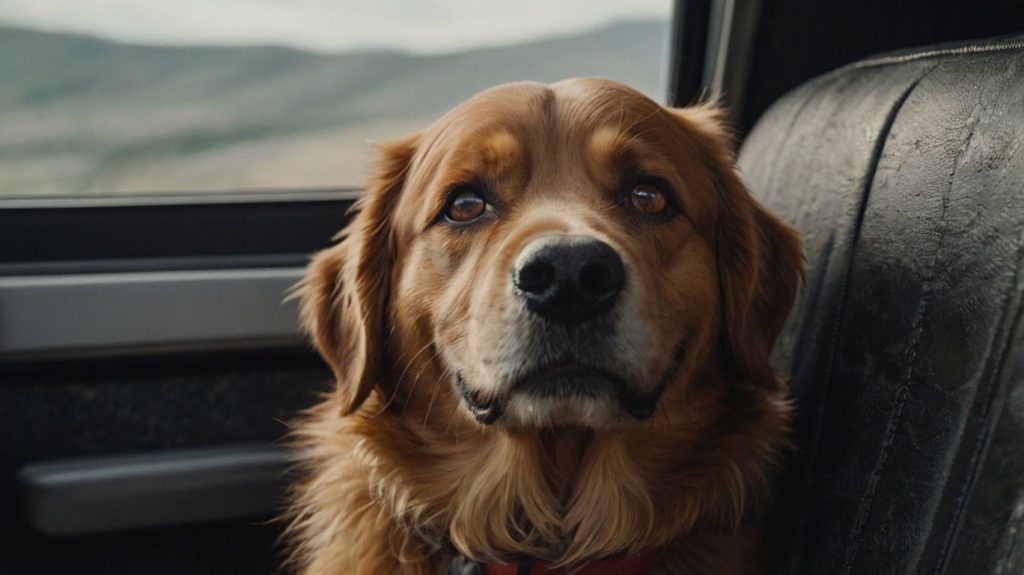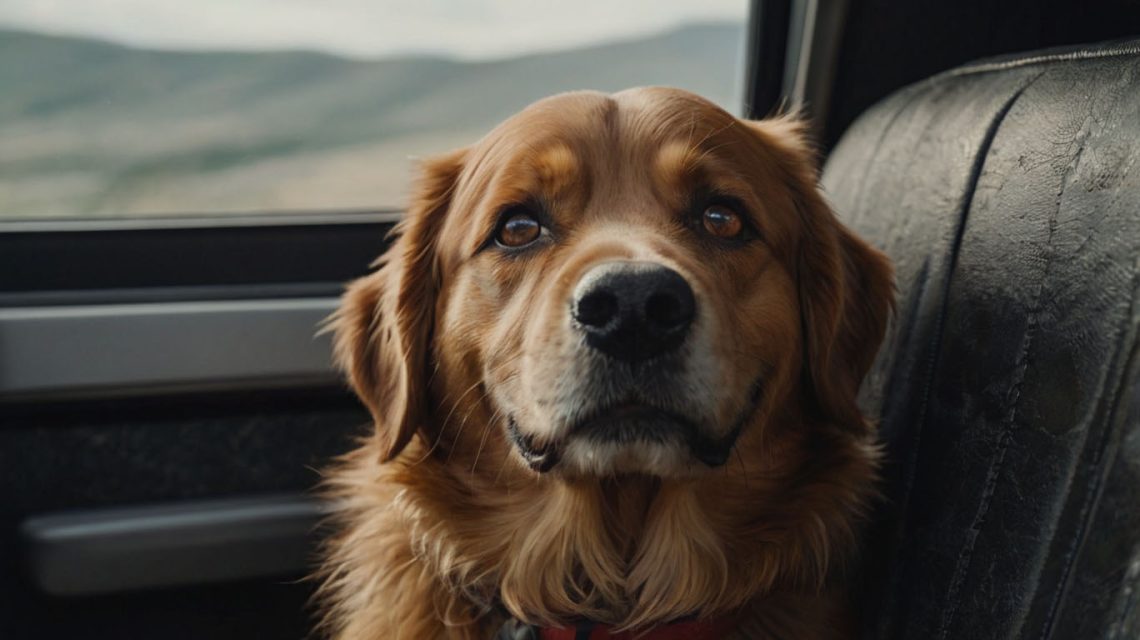Hitting the road with your dog should be exciting—but for some pups, travel triggers panic instead of pleasure. If your furry companion pants excessively, trembles in the backseat, or refuses to get into the car, you’re likely dealing with dog travel anxiety symptoms.
While occasional restlessness is normal, ongoing signs of travel-related stress can harm your dog’s well-being—and your journey. The good news? With the right awareness and action, you can help your dog associate travel with comfort, not fear.
Let’s begin with a story that highlights the power of early recognition and supportive care.
Story: How Benny Overcame His Fear of the Open Road
Benny, a 2-year-old rescue beagle, had never ridden in a car before adoption. On his first trip to the vet, he drooled uncontrollably, whined nonstop, and vomited before they even pulled out of the driveway. His owners assumed it was motion sickness, but after repeat episodes, they realized these were classic dog travel anxiety symptoms.
Instead of giving up, they worked with a behaviorist, introduced crate training, practiced short car rides, and used positive reinforcement. Gradually, Benny stopped dreading car trips. Now, he enjoys road adventures with his tail wagging all the way.
Benny’s story proves one important point: anxiety can be managed if we know what to look for and act early.

Why Recognizing Dog Travel Anxiety Symptoms Matters
Travel anxiety doesn’t just make road trips miserable. It affects your dog’s mental and physical health. Also, it can be dangerous if your dog becomes panicked while the vehicle is in motion.
Consequences of Ignoring Dog Travel Anxiety Symptoms
- Escalation of stress and phobias
- Increased risk of injury during transit
- Motion sickness caused or worsened by stress
- Interruption of essential activities (vet visits, relocations)
- Negative association with cars, travel, or carriers
Understanding dog travel anxiety symptoms gives you the power to step in and build better travel habits.
Dog Travel Anxiety Symptoms You Shouldn’t Ignore
Let’s explore the most common behaviors that signal your dog may be anxious about traveling.
Excessive Panting and Drooling in the Car
When your dog is panting without heat or exertion, it’s often a stress response. If this is paired with drooling, especially before the car even starts, it’s likely anxiety—not motion sickness.
Tip:
Start the engine without moving the car and reward calm behavior.
Whining, Barking, or Yowling
Vocalization is your dog’s way of saying “I’m not okay.” Repeated whining or howling during travel is one of the earliest and most frequent dog travel anxiety symptoms.
Tip:
Ignore vocalization unless it stops—then reward the silence.
Shaking, Cowering, or Trying to Escape
If your dog hunches in the corner, refuses to enter the vehicle, or tries to claw their way out mid-trip, they’re experiencing extreme anxiety.
Tip:
Use a covered crate or pet-safe seatbelt harness to provide a sense of enclosure and safety.
Vomiting or Diarrhea During Travel
While this can be motion sickness, it may also result from anxiety. Monitor whether symptoms appear before the car starts—if so, stress is the more likely cause.
Tip:
Talk to your vet. They may recommend anti-anxiety medication for long journeys.
Refusal to Eat or Take Treats in the Car
A dog that normally loves treats but turns their nose up in the car may be overwhelmed. Anxiety shuts down appetite.
Tip:
Don’t force food. Focus on getting your dog relaxed before offering treats.
What Causes Dog Travel Anxiety Symptoms?
To treat anxiety, you must first understand what causes it. Dogs often associate cars with negative experiences or simply feel unsafe when they can’t understand what’s happening.
Common Triggers Behind Travel Anxiety
- Past trauma linked to car rides (e.g., vet visits or abandonment)
- Lack of early socialization to vehicles
- No restraint or safety gear in the car
- Sudden noises or movement inside the vehicle
- Motion sickness combined with stress
Knowing the “why” behind dog travel anxiety symptoms helps tailor your approach for better results.

How to Help Dogs with Travel Anxiety Symptoms
You don’t have to cancel vacations or dread vet visits forever. With the right steps, your dog can learn that travel is safe and even enjoyable.
Start with Short, Positive Trips
Begin with very short drives—around the block—and immediately follow with something your dog loves, like playtime or a walk.
- Gradually increase the trip length
- Avoid stressful destinations at first
- Reinforce calm behavior throughout
Use Familiar and Calming Gear
Equip your dog with comfort items to reduce anxiety during the ride:
- A crate lined with their favorite blanket
- A favorite chew toy or stuffed Kong
- Calming pheromone sprays (like Adaptil)
- Soft classical music or dog-calming playlists
Keep the Car Environment Comfortable
Small changes make a big difference:
- Maintain cool, stable temperatures
- Limit sudden stops or swerving
- Use sunshades to block overstimulation
- Minimize loud music or voices
The smoother the ride, the calmer your dog will feel.
Try Calming Supplements or Vet-Approved Medications
In some cases, natural remedies or prescription medications may be necessary, especially for long trips or flights.
- CBD oil for dogs
- Calming chews with chamomile or L-theanine
- Prescription anxiety meds (ask your vet)
Always consult a professional before giving any medication.
Crate Train Your Dog for Travel
If your dog is crate-trained, they will feel more secure. A crate acts as a den—a safe, enclosed space that helps reduce overstimulation during transit.
- Use the crate at home first to build comfort
- Practice loading and unloading from the crate in the car
- Never force your dog inside—encourage with treats and praise
Real Case Study: Molly’s Road Trip Recovery
Molly, a 4-year-old Labrador, refused to enter the car. Her owners worked with a trainer and followed a strict desensitization plan.
- Week 1: Rewarded sitting near the car
- Week 2: Practiced entering the car with engine off
- Week 3: Short rides with high-value treats
- Week 4: Drove to the dog park for a fun association
By the fifth week, Molly jumped into the car on command and wagged her tail en route to adventures. Her progress shows how small, structured steps build big confidence.
FAQs About Dog Travel Anxiety Symptoms
How can I tell if my dog’s travel issues are anxiety or motion sickness?
If symptoms start before movement or persist after the ride, anxiety is likely. Motion sickness usually improves with age.
Should I crate my dog for car rides?
Yes. A crate offers safety and comfort, especially for anxious dogs.
Can dogs overcome travel anxiety completely?
Many do with consistent training, positive reinforcement, and time.
Are calming chews safe for travel anxiety?
Yes—when used as directed and vet-approved. Always test at home first.
Is medication necessary for travel anxiety?
Only for severe cases. Try behavior changes first, and consult a vet if symptoms persist.
Conclusion: Don’t Let Dog Travel Anxiety Symptoms Steer You Off Course
Traveling with your dog doesn’t have to mean stress, struggle, or canceled plans. Recognizing dog travel anxiety symptoms early allows you to create a plan that helps your pup feel secure, supported, and calm on the road.
With patience, preparation, and a little creativity, even the most anxious traveler can become a confident co-pilot.


